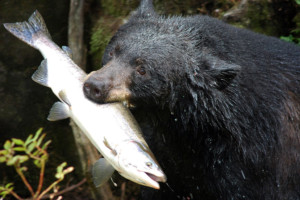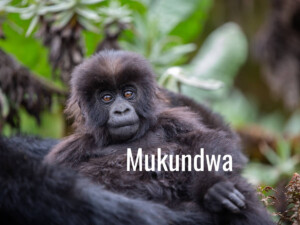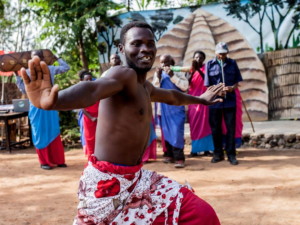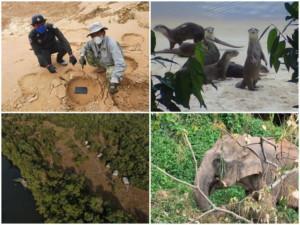Pantanal jaguar ecotourists willing to compensate ranchers for stock losses
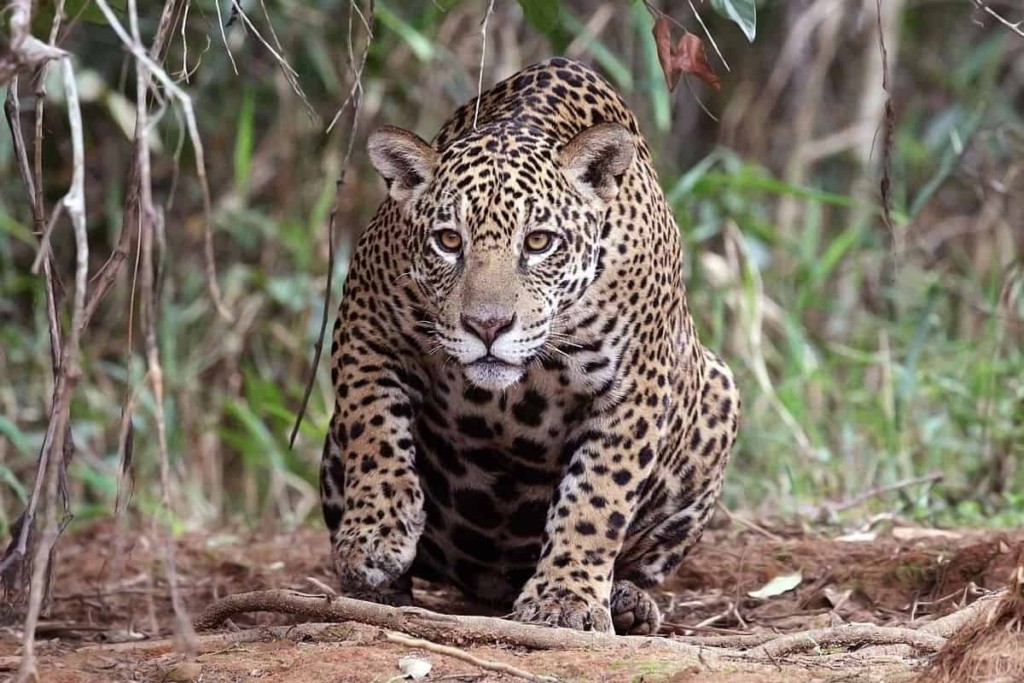
This is according to a new study, “The numbers of the beast: Valuation of jaguar (Panthera onca) tourism and cattle depredation in the Brazilian Pantanal”, by Fernando R. Tortato, Thiago J. Izzo, Rafael Hoogesteijn, & Carlos A. Peres published in Global Ecology and Conservation.
The authors show that “jaguar ecotourism represents a gross annual income of US$6,827,392 in land-use revenue across a representative portion the Brazilian Pantanal” compared to “a hypothetical damage of only US$121,500 per year in bovine cattle losses”. And they claim that the loss of livestock due to jaguar predation could be “compensated by a system of voluntary donations from tourists, ensuring that both traditional livestock husbandry and ecotourism can co-exist within the same ranches, thereby promoting landscape-scale jaguar conservation”.
The researchers surveyed 137 tourists in the study area:
Having been informed of the existence of a conflict between jaguars and cattle ranchers, tourists became aware that observed jaguars can take both wild and domesticated prey outside the park, with 96% agreeing that a compensation scheme would be required to cover the costs of jaguar depredation on livestock. In fact, 95% of all informants believed that jaguar tourism could be a tangible source of revenues for this compensation scheme and 80% agreed to, on average, donate an additional 6.8% (SD ± 3.9%) of the value of their all-inclusive daily rates …
Extrapolating the survey findings based on tourism numbers for the study area, this works out to nearly three times more than the US$32 per tourist minimum donation required to sufficiently compensate cattle ranchers.
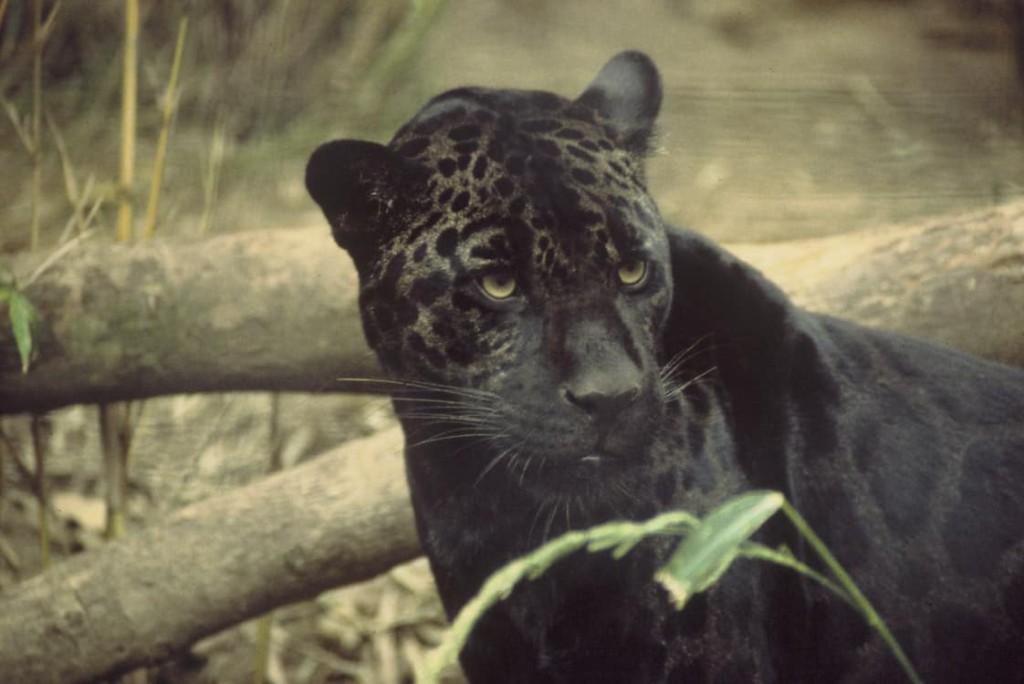
A melanistic jaguar, informally known as a “black panther”. By Ron Singer & the National Digital Library of the United States Fish and Wildlife Service via Wikimedia.
The authors also considered how ranchers might be incentivised to mitigate their stock losses and protect jaguars on their properties via a “stable compensatory partnership” based on best management practices and benchmarks of reasonable expected stock losses.
The Pantanal is the world’s largest tropical wetland (between 140,000 and 195,000 sq.km) located mainly in Brazil but also portions of Bolivia and Paraguay. (Wikipedia)
The jaguar (Panthera onca) is the only extant “big cat” feline species native to the Americas. The third-largest feline species after the tiger and the lion, the jaguar’s range extends from southwestern United States and Mexico across much of Central America and south to Paraguay and northern Argentina. (Wikipedia)
Featured image: A female jaguar at Piquiri River, the Pantanal, Brazil. By Charles J Sharp (Sharp Photography) (CC BY-SA 4.0) via Wikimedia.
Download
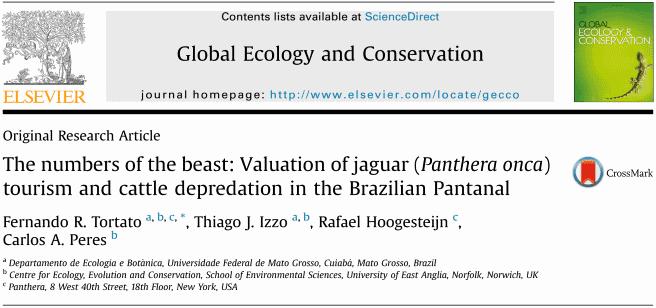 The numbers of the beast: Valuation of jaguar (Panthera onca) tourism and cattle depredation in the Brazilian Pantanal (PDF 2 MB; hosted offsite) by Fernando R. Tortato, Thiago J. Izzo, Rafael Hoogesteijn, & Carlos A. Peres.
The numbers of the beast: Valuation of jaguar (Panthera onca) tourism and cattle depredation in the Brazilian Pantanal (PDF 2 MB; hosted offsite) by Fernando R. Tortato, Thiago J. Izzo, Rafael Hoogesteijn, & Carlos A. Peres.
Related posts


